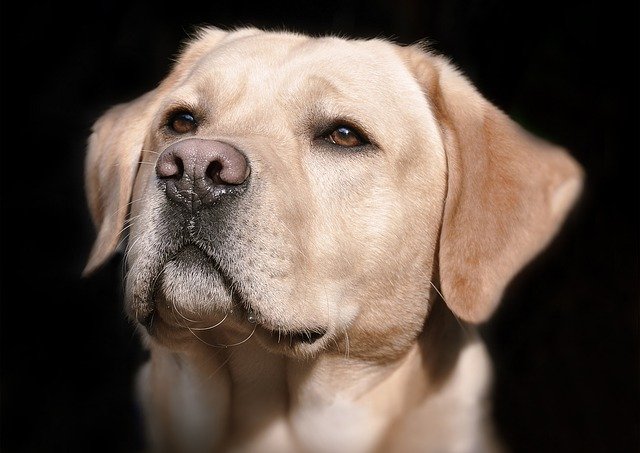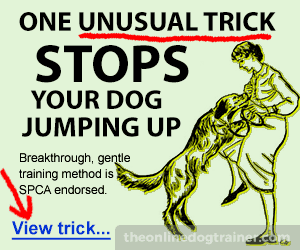Top 10 Dog Training Tips from the CIA
By The US Central Intelligence Agency

Did you know the CIA has its own dedicated staff of dog trainers? K-9 officers are an important part of our Security Protective Service (SPS), which ensures the CIA and its employees are kept safe. The trainers, all SPS officers themselves, work with a select group of dogs and handlers to teach them the ins-and-outs of explosives detection. Dogs have a remarkable ability to sniff out over 19,000 explosive scents, making them ideal for this job.
Dogs chosen for the Agency training course are hand selected by CIA trainers primarily from Susquehanna Service Dogs and Puppies Behind Bars, a program that pairs inmates with puppies to teach the dogs basic commands. Most of the Agency K-9s are Labradors, known for their intelligence and—most importantly—their unwavering good temperament. The dogs go through a six-week “imprinting” class, where they learn to identify thousands of explosive scents, and are then carefully matched with a CIA SPS K-9 handler. The dog and handler undergo an additional 10 weeks of intense one-on-one training, learning to work together as a team to find explosives in things such as cars, trucks and luggage. Once they pass the final test, the teams are deployed to sites throughout the world, working as the first line of defense against explosive threats to Agency personnel and buildings.
Click here to fix your dog's behavior problem and get started with dog obedience training.
Although our Agency dogs are trained for very specific jobs, many of the methodologies and principles our trainers use can be applied to training any dog, including your own. Below are 10 tips from our CIA K-9 trainers that we hope you’ll find useful, as well as some examples highlighting how these methods are used to teach some of the best explosives detection dogs in the world.
1. Make it fun
Training should be a fun and enjoyable experience for both you and your dog. Use anything fun to draw your dog in: food, dancing, toys, playing, high-pitch voices … The key is getting your dog to want to do the behavior you are asking of him/her, not trying to force your dog into a behavior. “If the dog makes the decision to do a desired behavior on its own,” says our lead K-9 trainer Dennis, “they learn more, rather than the trainer [or owner] making them do it.” Compulsion on a dog does not work.
2. Use what motivates your dog
When teaching your dog, use what best motivates him or her, whether it’s toys, treats, jumping up and down, or using cartoon voices. The important thing is to do whatever you can to get your dog’s attention and keep it. You want to make training a positive environment so your dog will want to learn.
Our trainers use food rewards with the Labs because they are extremely food motivated. They are kept on a strict kibble diet, which they receive throughout the day while in training. A high-pitched, happy voice also works wonders to get their attention and keep them motivated. Other dogs — like the shepherds the Agency used to train — were very toy rather than food motivated. Find out what works for your dog.
3. A small change is a big moment
When teaching your dog a new behavior, command, or trick, watch for slight changes in behavior. Those small changes can be the first sign your dog is beginning to understand what you are trying to teach him. The signals can be as small as your dog’s ears becoming alert when they are usually relaxed or maybe a glance and forward lean toward the object you want your dog to fetch. If you learn to pick up on those slight changes in behavior, you can time your praise and corrections more accurately to encourage the desired behavior.
When our K-9 unit begins a new class of dogs, one of the first things the pups learn is to sniff on command. The instructors watch for signs as they encourage the dogs to “seek.” At first, the dogs are taught to sniff a scent placed in a small tin at the bottom of a gallon can. As the dogs begin to figure out what “seek” means, they are taught or “imprinted” with the scents they need to pay attention to. When learning to differentiate the scents, the dogs will show small behavior changes during training — like tail wagging, drooling, or pulling toward the can containing the explosive scent — which can all indicate they are starting to catch on. The signs are different for different dogs, which is why changes, even small ones, in normal behavior are important to look for.
4. Work hard, play hard
Training should be fun, challenging, and rewarding — for both you and your dog. The energy and enthusiasm you put into the training session will affect your dog. As our lead K-9 trainer Dennis says, “What you’re feeling runs straight down the leash to the dog.” Having a bad day? Leave it at the door when you enter the training room. And, while it’s important to stay focused and energetic while training, unstructured play and relaxation is just as necessary. Dogs, like people, need time to unwind.
5. Watch for patterns
As with any person who learns the ins-and-outs of their job, dogs can get lazy and fall into patterns. An important aspect of any training routine is to watch for those patterns and disrupt them. If you always tell your dog to sit before her evening meal, try getting her to lay down instead, or sit randomly while on her daily walk. If you have trained your dog to “find” his toy, try hiding it up high or in a completely unexpected place. You want to keep your dog challenged and motivated to think through tasks. This is critical for service animals like our explosives detection dogs (and their handlers) who have to switch up routines and keep their training fresh to avoid falling into predictable thinking and behavior.
Sometimes, dogs can actually outsmart their owners by picking up on patterns. One black Lab in the K-9 unit has used her keen observation skills to outsmart the trainers. When imprinting the dogs to recognize a new explosive scent, the trainers place several cans in a large circle, some with the scent of an explosive and others with distractor scents. Trainers will often dent the side of the cans containing the explosive’s scent so they will visually know which cans the dogs should indicate on. This Lab, however, caught on to what the trainers were doing and began to indicate on the correct cans based on sight not smell. The trainers started marking the cans with chalk instead to change the pattern. Undeterred, the Lab soon noticed the chalk marks and began looking for those cans.
6. Introduce challenges
Once your dog learns the new command or behavior you want to teach her, introduce distractions to help her learn to differentiate between the wanted behavior (for example, sitting at the front door) and unwanted behavior (bolting outside as soon as the front door opens). The distractions can include things that will temp your dog or provide an obstacle to the wanted behavior. (Maybe have someone ring the doorbell or have someone with another dog standing outside when you open the door). By doing so, you can desensitize your dog to specific distractions and reinforce the desired behavior.
For our explosives detection dogs, we introduce “distractors” — the stuff you don’t want the dogs to indicate on — which consist of all kinds of smells they’ll come into contact with either on a daily basis or during the course of their work. Our K-9s are exposed to hundreds of different distractors, including things like dish soap, baking soda, and cheese-doodles.
7. Consistency is key
One of the biggest mistakes people make when training their dog is to teach the dog something and then abandon the training plan. Dogs will pick up on inconsistencies in training and take advantage of them. Stay consistent with your commands, training schedule, and methodology. Even something as simple as changing a command from “sit” to “sit down” can cause confusion while training. Familiarization and repetition are key factors in a dog learning new behaviors.
By staying consistent, once our K-9 trainers teach the pups the initial concept of “seeking” a scent, they can imprint a dog with a new odor in five minutes. After about a month of training, the pups will be able to learn and remember 18 new explosive scents in a single week!
8. Take breaks
Some training sessions will go exceptionally well, while others can be rocky. It’s okay to take a break and return to the task if either you or your dog gets frustrated. Both dogs and trainers need down time, and taking breaks with your dog is as important as the time you spend training.
During the initial imprinting class for the new CIA K-9 pups, they work in short 15-minute sessions throughout the day, with lots of breaks in between. Sometimes they rest in their crates, other times they go outside to expend some energy and just be dogs. Some days, at the end of class, the pups will get free time to just romp around and play together. By taking breaks, the dogs are able to better focus during training sessions, which in turn makes those sessions more productive and fun.
9. Utilize your dog’s natural energy level
A dog’s energy will fluctuate throughout the day, but each dog has a natural base energy level. Some dogs are extremely hyper (think of a ball-obsessive Border Collie who can play fetch for hours and then go for a 10-mile jog) while others are couch potatoes. Whatever your dog’s natural energy level is, utilize that for training. A hyper-active dog is going to need more stimulation and exercise, and perhaps taking him or her out for a run or to play fetch before a training session will help your dog focus when it’s time to learn.
Along the same line, if you want to pursue activities or jobs with your dog, take into account your dog’s personality and energy level. For example, when evaluating potential puppies for our explosive detection dogs, the trainers look for drive and energy that is hard to shut down. The dog needs to be able to adapt to a constantly changing schedule and environment, and a high energy dog that is always “on” tends to cope best in those situations. On the flip side, a therapy dog needs to stay calm and consistent in a variety of circumstances, so a high-energy, hyper-active dog may not be the best choice.
10. Always end on a positive
If a mistake happens during training, or you or your dog get frustrated, it’s okay to stop the session early. Just be sure to end the lesson on a positive note. Even if it’s an easy win (something you know your dog will succeed at) it’s important to finish with both you and your dog feeling good. That way, you’ll both be excited and look forward to your next training session.
Click here to fix your dog's behavior problem and get started with dog obedience training.







